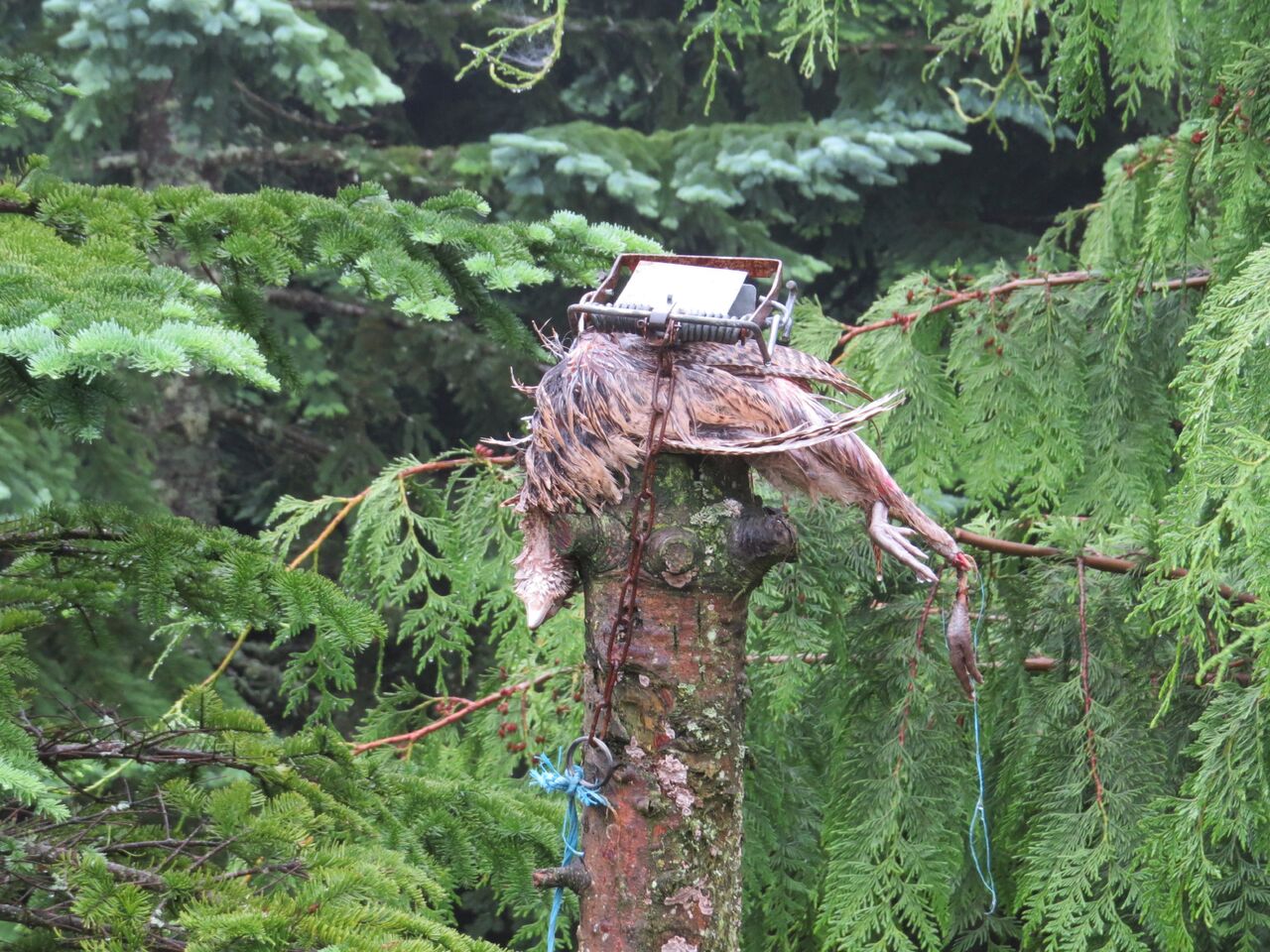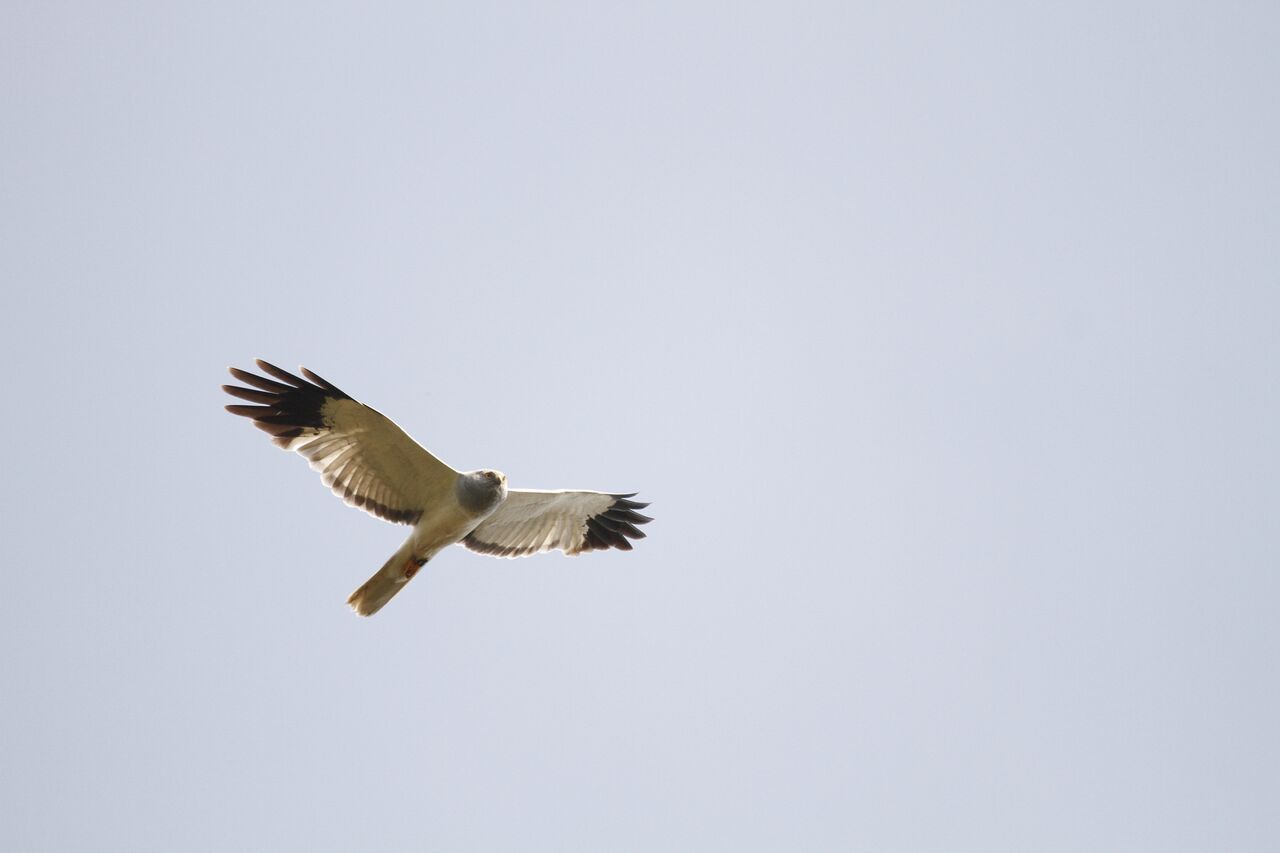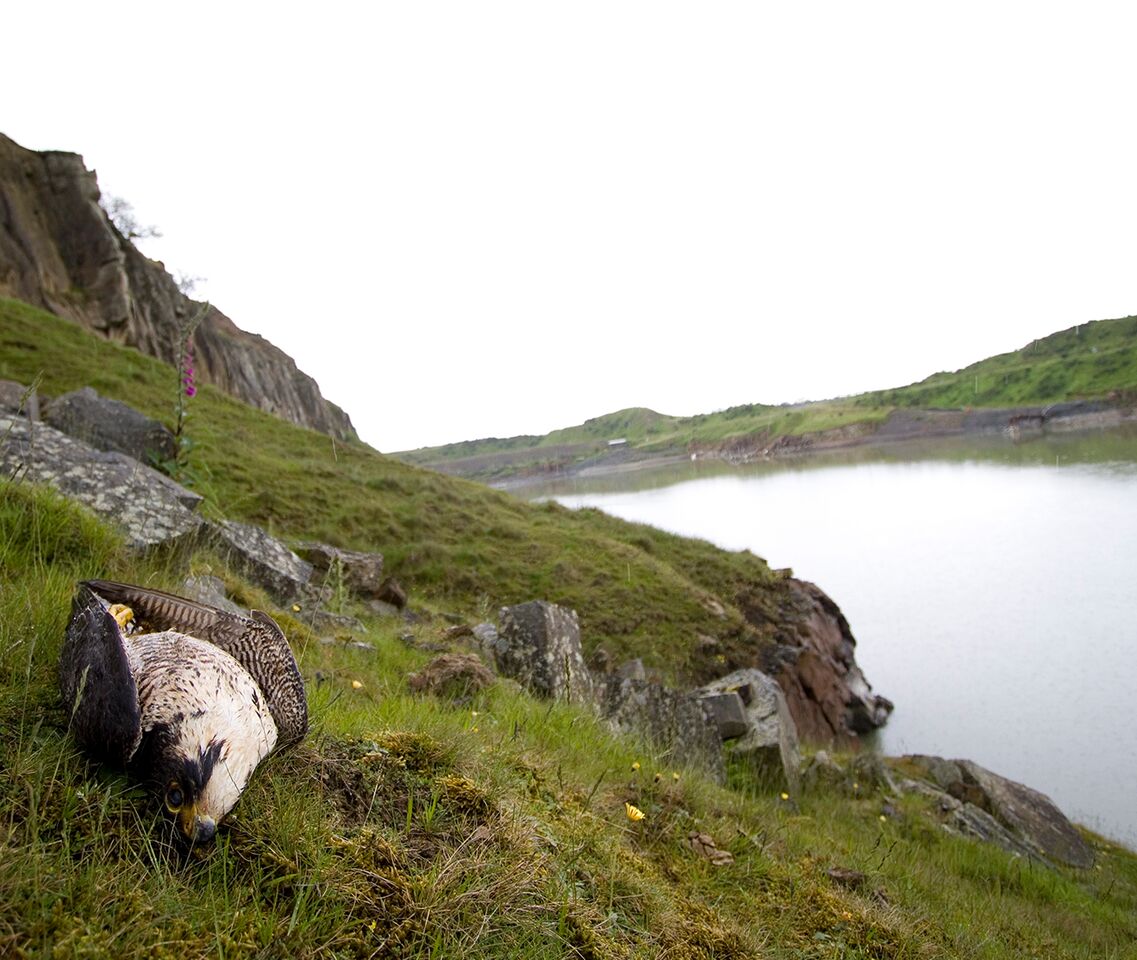
Pole trap on Brewlands Estate, Scotland.
- RSPB’s Birdcrime report reveals 68 confirmed incidents of bird of prey persecution in the UK during 2017, but many illegal killings are going undetected or unreported.
- Incidents occurred in all 4 UK countries with England having the highest number of confirmed incidents
- The RSPB believes the introduction of a licensing system for driven grouse shooting would help tackle the ongoing illegal persecution that occurs on these grouse moors, and protect the interests of responsible landowners.
The UK’s birds of prey continue to be at risk according the latest Birdcrime report which has revealed a minimum of 68 confirmed incidents of detected illegal bird of prey persecution in 2017.
Birdcrime 2017 – the only report summarising offences against birds of prey (also known as raptors) in the UK – revealed 48 shooting, 9 poisoning, 3 trapping, 4 nest destruction and 4 other incidents of illegal persecution against raptors. However, evidence suggests these figures are just the tip of the iceberg with many illegal killings going undetected or unreported.
And it’s not only detection that is a problem. There were just four raptor persecution-related prosecutions in 2017 and only a single conviction.
Among the victims found were both rare species such as hen and marsh harriers, peregrine falcons, and short-eared owls as well as more common species such as red kites and buzzards, putting the ongoing recovery of some of these species at risk.
The report also revealed that more than three quarters (55) of the confirmed incidents took place in England. However, incidents weren’t confined to England, with the report highlighting confirmed case in Wales, Northern Ireland and Scotland.

Hen Harrier. Photo: Jack Ashton-Booth
Martin Harper, RSPB Conservation Director, said: ‘“Birds of prey are part of our heritage and inspire us. We should all be able to enjoy seeing these magnificent birds, however illegal activity continues to put species at risk. There are laws in place to protect these birds but they are clearly not being respected or adequately enforced. We need governments across the UK to do more to tackle illegal killing to protect our raptors for us and for future generations to enjoy. ‘.
Previous research has shown that illegal killing of birds of prey is associated with land managed for intensive driven grouse shooting, leaving vast areas of our uplands without typical breeding raptors. A Natural England study revealed ‘compelling evidence’ that persecution of hen harriers – associated with driven grouse moors – was the main factor limiting their recovery in England.
Governments need to do far more to create a climate of accountability, particularly on shooting estates. Whilst there has been some steady progress in Scotland, elsewhere far more needs to be done. The RSPB is calling on the UK Governments to introduce a system of licensing for driven grouse shooting, to ensure land is managed legally and sustainably. This would also help tackle the wider problems of intensive management of ‘big bag’ driven grouse shooting, like the draining of and burning on fragile peat bogs. A fair set of rules in the form of a licensing system could help ensure shoots are operating legally and sustainably and introduce the option of restricting or removing a licence in response to the most serious offences, for example where staff on an estate have been convicted of illegally killing birds of prey.

Poisoned Peregrine. Photo: Tim Jones
Bob Elliot, RSPB Head of Investigations, said: ‘The persecution of birds of prey is a widespread problem in the UK, and is affecting some of our most loved and vulnerable species, like owls and eagles. Every week the RSPB’s Investigations team get reports of yet another raptor being shot, trapped or poisoned. But for every report we receive, scientific studies suggest there are many more that go undetected and unreported. As such, these figures only scratch the surface of the true extent of raptor persecution in the UK.’.
The RSPB has also launched the Raptor Persecution Map Hub. This comprises two interactive maps – one which can be filtered by year and incident type, and the other that provides an overview ‘heat map’ of confirmed incidents across the UK for the period 2012-2017 – enabling people to see where this illegal activity is occurring.
For the full copy of Birdcrime 2017 report summarising the extent of illegal persecution offences against birds of prey in the UK, visit www.rspb.org.uk/birdcrime
ENDS
[registration_form]
Just to re-iterate what Mark says about the known cases of raptor persecution, just being the tip of the iceberg. I think it should be clear to anyone not in denial, that this is the tip of a massive iceberg. I would have thought that undetected raptor crimes are a minimum of 10 times higher than detected crimes. Likely much more than this.
My reasoning is simple. The cases which get detected are when those persecuting raptors get sloppy or slip up. When we have such a large proportion of satellite tagged raptors, almost certainly being killed, not disappearing, we know illegal raptor crime is rife. What gets me is often the sheer speed in which satellite tagged birds “disappear” within weeks of being tagged. I’m pretty certain that these shooting interests are not just killing satellite tagged birds, and only a very small proportion of raptors are satellite tagged. If you say the same proportion of non-satellite birds are being killed, that is a very large number of raptors.
We aren’t talking about the odd bad apple gamekeeper taking a sneaky shot at a raptor when it flies past. We are talking about many individuals, on many shooting estates, putting in a lot of time and effort to kill these raptors. To kill a raptor with a shotgun, it’s got to be within about 50m of you, more like 30-40m. Ask yourself as a birder, how many times does a raptor fly within this range of you when you’re walking in the open? To get these opportunities to kill raptors, to find and locate their nests takes a lot of dedicated time in the field, when these keepers have got many other tasks to do. This means there are an awful lot of people in the know. Keepers wouldn’t be able to spend so much time on this task, without their employers being aware of what they are doing in the time they’re being paid for.
55-74 females Hen Harriers are killed each year in Scotland alone, which is 11-15% of the UK population of breeding females and that figure does not include males or immatures (Etheridge et al. 1997)
http://www.jstor.org/stable/2405296?
Shockingly this is just for one sex, at one stage, of one species, in one part of the UK. There are also male or immature Hen Harriers being killed, also in England, Wales on just the British mainland. Add to this all the other species of raptors being killed each year, and it is not improbable it is in the thousands, possibly several times over. This is as I say, a pretty massive iceberg we see the tip of.
When you look honestly at what this points to as being likely, we are talking about very high levels of raptor persecution across many managed shoots. It is indeed not unlikely that this is actually taking part on the majority of managed shoots. As conservationists, naturalists etc, we’re used to dealing with facts and evidence. Unfortunately here most of the evidence is carefully concealed, ande the authorities seem intent in not looking into to this to find out the scale of the problem. Although the now often complete absence of successfully breeding raptors on grouse moors is indicative of the scale of the problem.
As I said above, this scale of efficiency indicates that a great deal of time and effort is being put into this. As has been pointed out by others, go back a decade or three, and whilst persecution was happening, it wasn’t with the same intensity, because there were still breeding populations of Hen Harriers and Peregrines on English grouse moors, where there are now none.
Of course the shooting interests will say where’s my evidence, something they have actually said to me? I say they are being deceitful and devious, because they know that most of the time they kill raptors and destroy the evidence, that these incidents never find their way into bird crime reports, and are therefore emboldened to continue both the raptor killing and and the dishonest denial.
SteB is correct. I see the latest RSPB data and maps as evidence that the organised criminals and their supporters will find hard to counter. I’m also of the opinion that there are certainly more criminal acts committed in the driven grouse industry, but the rest of the shooting fraternity has not yet instructed its employees to stop committing crimes in many cases. I hope they can in future point to reduced tagged bird deaths rather than show a reduction because they are learning to conceal their actions better.
Yes, just the tip of the iceberg…. and we all know what they do to unsinkable ships! So time our politicians and landowners start listening to the Mayday now, and get sorting this out.
The biggest fear I have with licensing is that it will give the landowners another 20 years to prevaricate, talk and do nothing.
Five years in and we will still be hearing ‘we must give licensing time to take root, time to work’ landowners will still be asking for more time to adjust to the new rules. And of course, vested interest suggests that the government and courts will back up the landowners.
Meanwhile we, the taxpaying, subsidising public, will be losing more of our heritage, our birds, our mammals, our clean water.
Of the many people advocating licensing as the way forward, surely there is one who can write a guest blog explaining how they see it working, what needs to be put in place to ensure it works and what the future will look like for those who adhere to the new rules and those that don’t.
So far, all I’ve seen are wishes and idealism.
Rose tinted glasses will not give us our wildlife back.
I couldn’t agree more, Paul. Even Ed Hutchings, who promoted a petition calling for licensing, ended up concluding that it would be a waste of time and only a ban would achieve anything.
Everything we know suggests that the licensing system would end up being watered down, enforcement would be weak, and penalties for infringements would be paltry. Like you, my fear is that the shooters will go along with any licensing plans, in the certain knowledge that it will buy them many years of doing almost exactly what they like.
The ‘middle way’ is not always the right way!
On a very different note, trackers are put on birds to, well, pretty obviously, to track them. In these days of sophisticated hacking, is there anyway a gamekeeper could also be tracking these birds?
As SteB has said, they do seem to be removed very quickly. Short of having permanent guns lined up on all moors, how do these guys get to know the whereabouts so quickly.
Please, somebody tell me this is impossible.
This report used to be easy to read!
Tio of the iceberg, definitely
Then factor in all the other #wildlifecrime such as hare coursing, badger baiting (oh, that appears to Government assisted now deer poaching etc. etc.
deer poaching etc. etc.
Nation of animal lovers … not in Big Government?
Definitely need a #PeoplesManifestForWildlife
Well said, Paul.
Why are landowners not held responsible? It seems to be gamekeepers who are prosecuted. The shooting industry holds us all ransom in the British Isles. It seems most of us wil never be permitted to enjoy the wildlife that should be out there in good numbers.
Irene – in Scotland, because they introduced something called vicarious liability for wildlife crime, landowners are responsible for the crimes of their employees unless they can demonstrate that the criminal was acting against clear instructions. In England, the Conservative and coalition governments have refused to introduce any similar legislation. Thanks for your comment.